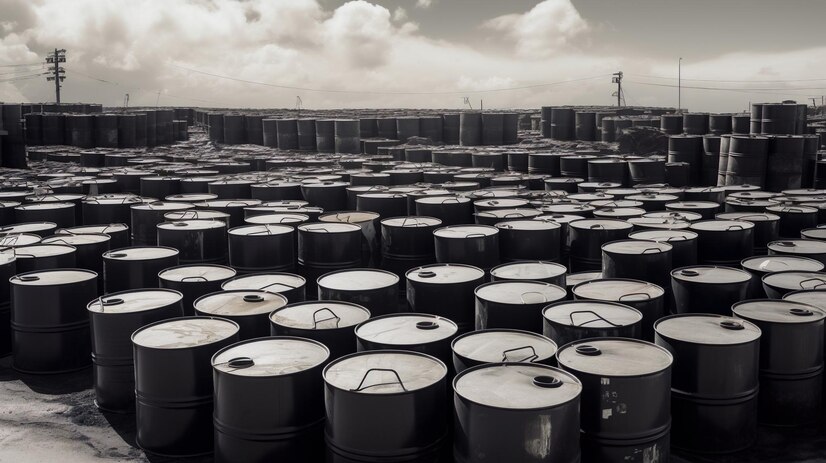
Oil derivation
Bitumen
Product | Bitumen |
|---|---|
Packaging | New Steel Drum, Tanker, Jumbo Bag, bulk |
Price | Negotiable |
Payment Terms | Negotiable, T/T , DLC |
Delivery Terms
| FOB, CIF, CFR, CPT and FCA |
Min Order
| Negotiable |
HS Code | 27132010 |
Bitumen is manufactured from the distillation of crude oil during petroleum refining. It is produced to meet a variety of specifications based upon physical properties for specific end uses. Its main characteristics as an adhesive, as well as being waterproof, thermoplastic, durable, modifiable and recyclable make it ideal as a construction and engineering material. Most of the roads globally currently are paved with bitumen. Today the world’s demand for bitumen accounts for more than 100 million tons per year which is approximately 700 million barrels of bitumen consumed annually. Although bitumen can be found in natural form, the world currently relies for all purposes on petroleum with following different types.
| NUM | Analysis | Unit | Limit | Test Method |
|---|---|---|---|---|
| 1 | Density @25C | Kg/m3 | 1010-1060 | ASTM D70 or D3289 |
| 2 | Penetration @25C | mm/10 | 60-70 | ASTM D5 |
| 3 | Softening point | C | 46 min | ASTM D36 |
| 4 | Ductility @25C | cm | 100 min | ASTM D113 |
| 5 | Loss on heating | Wt% | 0.2 max | ASTM D6 |
| 6 | Drop in penetration after heating | % | 20 max | ASTM D5 |
| 7 | Flash point | C | 230 min | ASTM D92 |
| 8 | Solubility in Trichloroethylene | Wt% | 99.0 min | ASTM D2042 |
| 9 | Spot test | - | Negative | AASHTO T102 |
| 10 | Dynamic viscosity @60C | Pa.S | 200±40 | ASTM D2171 |
| 11 | Kinematic viscosity @135C | cSt | 300 min | ASTM D2170 |
| 12 | Wax Content | % | 2 max | DIN EN 12606-1 |
| NUM | Specifications | 60-90 | Test Method |
|---|---|---|---|
| 1 | Specific Gravity | 1.00-1.25 | ASTM D3289 |
| 2 | Penetration (25C, 100g, 5s),0.1mm | 60-90 | ASTM D5 |
| 3 | Softening point,C | 40-60 | ASTM D36 |
| 4 | Flash point,C | 230 min | ASTM D92 |
| 5 | Ductility (25C,5cm/min),cm | 100 min | ASTM D113 |
| 6 | Solubility in TCE,wt% | 99.5 min | ASTM D4 |
| 7 | Spot Test | Negative | AASHTO T102 |
| 8 | Loss on heating, wt% | 0.03 max | ASTM D6 |
| Analysis | Test Method | Limit | Unit |
|---|---|---|---|
| Density @25C | ASTM D70 or D3289 | 1010-1060 | Kg/m3 |
| Penetration @25C | ASTM D5 | 40-50 | mm/10 |
| Softening point | ASTM D36 | 49 min | C |
| Ductility @25C | ASTM D113 | 100 min | cm |
| Loss on heating | ASTM D6 | 0.2 max | Wt% |
| Drop in penetration after heating | ASTM D5 | 20 max | % |
| Flash point | ASTM D92 | 230 min | C |
| Solubility in Trichloroethylene | ASTM D2042 | 99.0 min | Wt% |
| Spot test | AASHTO T102 | Negative | - |
| Dynamic viscosity @60C | ASTM D2171 | 400±80 | Pa.S |
| Kinematic viscosity @135C | ASTM D2170 | 400 min | cSt |
| Wax Content | DIN EN 12606-1 | 2 max | % |
Questions? You’re covered.
Bitumen can be recycled and reused, reducing the need for new raw materials and minimizing waste. Additionally, the use of Bitumen in road construction helps improve fuel efficiency and reduce vehicle emissions through smoother and more durable road surfaces.
Spills of Bitumen during transportation can pose environmental hazards, particularly in aquatic ecosystems. Contamination of waterways can harm aquatic life and ecosystems, requiring prompt and effective cleanup measures to mitigate environmental damage.
Transporting Bitumen by ship presents logistical challenges due to its high viscosity and temperature sensitivity. Specialized tankers and heating systems are required to maintain Bitumen in a pumpable state during transit, along with proper insulation to prevent temperature fluctuations.





